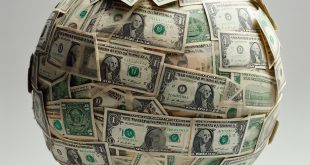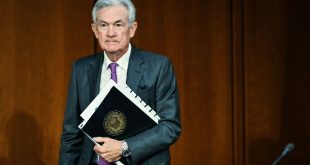Both Friday’s Nonfarm Payrolls report and next week’s the US Consumer Price Index are in the focus of exceptional attention for traders and investors. Gold price is up about 0.9% from a low of $1,812.02, and it has since risen strongly to challenge $1,835.64 as the US dollar lost additional ground in the DXY index after earlier in the week reaching a three-month high. At the time of writing, gold is trading at $1,830.40 per ounce.
Early Wall Street trading saw a shift in risk appetite, which helped gold price because US economic data has shown that the tight US labour market is beginning to show symptoms of cracks. In contrast to how the markets were beginning to position after Fed Chair Jerome Powell’s aggressive statements to Congress earlier in the week, this occurred the day before the US Nonfarm Payrolls event on Friday. Gold price hasn’t changed despite the collapse of US equities.
Latest US Jobless Claims increased by 11%. The growth was the biggest in five months. At the same time, February’s anticipated layoffs increased fourfold from the previous year. This information may indicate that the Fed’s cycle of rate increases has been working as expected and that further rate increases are not necessary.
As a result of the falling US Treasury yields, Gold Price increased, which is positive given that gold doesn’t pay interest. The US 10-year note was last seen paying 3.927%, down from the highs of 4.019%. The increase in gold price follows yet another down day for the US Dollar index, DXY, which is currently down about 0.33% after sliding from a day high of 105.729 and a day low of 105.153. Following Powell’s aggressive speech before Congress earlier in the week, the US dollar soared.
Following positive economic reports that showed the economy is still humming along, Fed Chairman Powell informed legislators that the central bank would increase interest rates higher and quicker. As a result, the market increased its forecast for a 50-basis point rate increase from the Fed.
The current consensus among analysts is that there will be a 50 bp increase at the Federal Open Market Committee meeting on March 21–22. The Fed Funds rate is expected to increase by 25 bps in May and June, bringing it to 5.50–5.75%. There is an over 30% chance that the rate will increase by another 25 bps in Q3, bringing the range to 5.75–6.0%.
It is still expected that an easing cycle will begin in the fourth quarter, albeit the probability being much lower. Eventually, during the ensuing Fed repricing phase, it should be clearly and thoroughly priced out through 2024. The higher trends in US rates and the US currency, in our opinion, are still relevant.
As for the Nonfarm Payrolls, this event will be part of a duo that is going to be instrumental in guiding market expectations regarding the policy guidance likely to be offered by the FOMC at the March meeting.
Following the monster report that showed a rise in job creation to 517k in January, payroll gains will mean-revert to 230k in February. The unemployment rate is anticipated to stay at its historically low level, while average hourly earnings are predicted to have increased at a faster pace of 0.4% m/m, pushing the YoY measure up to a still-high 4.8%. The bar for USD weakness to prevail is rather high; data would need to dramatically surprise to the downside.
Markets are also anticipating the US Consumer Price Index, which is expected to grow by 0.4% MoM and 0.5% in February, according to analysts. More so than in prior months, price pressures in January were strong and widespread. a possible indicator that inflationary pressures are escalating once more.
The BLS’s annual revisions to the CPI seasonal variables reveal that inflation did not decrease as much as first thought during H2 2022. This indicates that the Fed is dealing with a stickier inflation problem than it initially believed early this year.
Recent economic activity and inflation indicators show a robust economy, indicating that the Fed still has to do more to reduce demand, especially in the labour market. At the FOMC meeting in March, the terminal fed funds rate (FFR) estimate is likely to be revised upward, which could present a challenge for gold price forecasters in the near term.
In an effort to reach the neckline of the M-formation, Gold Price just crossed again above the $1,825 threshold. With regions between the move into the 38.2% and 78.6% Fibonacci scale open to a test, we have price support at $1,804 and resistance at $1,850. If the bears act decisively, there is a chance that price will challenge the 200 DMA in the following days with the $1,1770s in mind.

Gold
 Noor Trends News, Technical Analysis, Educational Tools and Recommendations
Noor Trends News, Technical Analysis, Educational Tools and Recommendations




